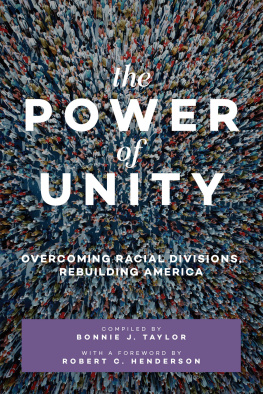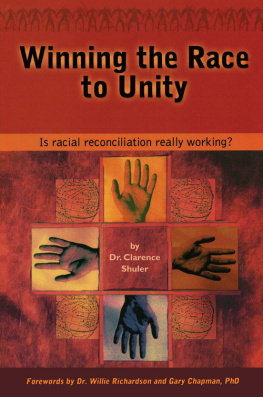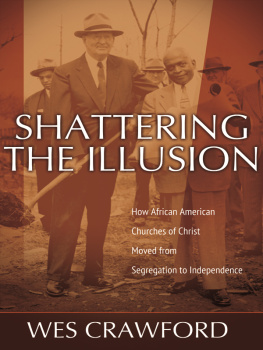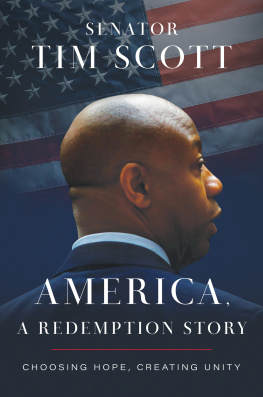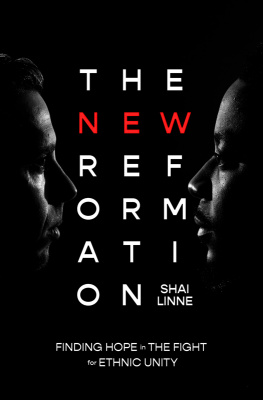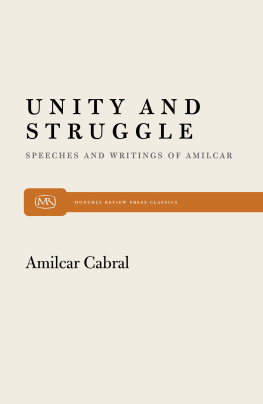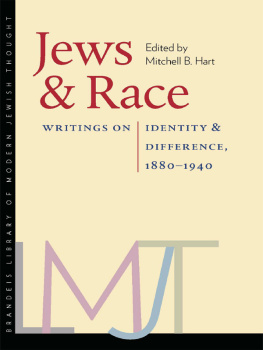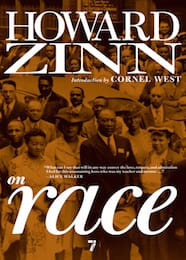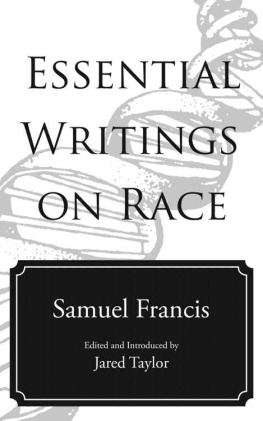Bah Publishing
401 Greenleaf Avenue, Wilmette, Illinois 60091
Copyright 2019 by the National Spiritual Assembly of the Bahs of the United States
All rights reserved. Published 2019
Printed in the United States of America on acid-free paper
22 21 20 19 4 3 2 1
Library of Congress Cataloging-in-Publication Data
Names: Taylor, Bonnie J., compiler.
Title: The power of unity : overcoming racial divisions, rebuilding America / compiled by Bonnie J. Taylor.
Description: Wilmette, Illinois : Bah Publishing, 2019. | Includes bibliographical references.
Identifiers: LCCN 2019003812 | ISBN 9781618511447 (alk. paper)
Subjects: LCSH: Bahai Faith. | Race relationsReligious aspectsBahai Faith. | United StatesRace relations. | ReconciliationReligious AspectsBahai Faith. | ConcordReligious aspectsBahai Faith.
Classification: LCC BP388.R44 P69 2019 | DDC 297.9/3176284dc23
LC record available at https://lccn.loc.gov/2019003812
Cover design by Jamie Hanrahan
Book design by Patrick Falso
CONTENTS
O Children of Men!
Know ye not why We created you all from the same dust? That no one should exalt himself over the other. Ponder at all times in your hearts how ye were created. Since We have created you all from one same substance it is incumbent on you to be even as one soul, to walk with the same feet, eat with the same mouth and dwell in the same land, that from your inmost being, by your deeds and actions, the signs of oneness and the essence of detachment may be made manifest. Such is My counsel to you, O concourse of light! Heed ye this counsel that ye may obtain the fruit of holiness from the tree of wondrous glory.
Bahullh, the Hidden Words, Arabic, no. 68
This book is about unitywhat unity is, how unity works, and the work that unity does. Its contents are drawn from the Bah writings and expatiate on the central organizing principle of the Bah Faith, the oneness of humankind.
From its inception in 1863 the Bah community was dedicated to the principle of the unity of all peoples. Bahullh, Prophet-Founder of the Bah Faith, established the oneness of humankind as the Faiths organizing principle. His teachings specifically forbade slave trading, made eliminating racial prejudice a spiritual law of the Faith, encouraged interracial marriage, and explained that the unity of the races is a precondition to the establishment of everlasting social justice and peace within and among nations.
In the practice of the Bah teachings,
Bahs rely upon faith in God, daily prayer, meditation, and study of the sacred texts to effect the transformation of character necessary for personal growth and maturity; however, their aim is to create a world civilization that will in turn react upon the character of the individual....
Guided and inspired by such principles, the Bah community has accumulated more than a century of experience in creating models of unity that transcend race, culture, nationality, class, and the differences of sex and religion, providing empirical evidence that humanity in all its diversity can live as a unified global society. Bahs see unity as the law of life; consequently, all prejudices are perceived as diseases that threaten life.
The Bah teachings state clearly that prejudices of all kinds are destructive of the divine foundations of Gods purpose for creation. They emphasize that all of the warfare and bloodshed in human history has been the outcome of prejudice of some kind, whether it is of race, religion, nationality, or ethnicity.
Moreover, Bahs believe that diversity is an indispensable element of unity. That the full beauty, power, and potential of individual human beingsthe families they establish; the communities in which they reside; and, the nations from which they hailbecome manifest as they build bonds and ties that are stronger than blood among people of diverse backgrounds.
While the Bah teachings are global in scope and application, they also speak specifically to America and to the imperative of eliminating racial prejudice as a necessary prerequisite to the achievement of world peace in which, Bahs believe, America is destined to play a leading role. The Bah writings express the confident hope that the American democracy be the firstnation to establish the foundation of international agreement, the first nation to proclaim the universality of mankind, and the first to upraise the Standard of the Most Great Peace.
The Bah teachings establish the urgency and priority of the struggle to build unity among the races and links them directly to the refinement of spirit and character among individual Bahs, the development of the Bah community itself, and the transformation of the American nation and of global civilization. Bahs believe that the transformation of the nation as a whole begins with the initiative and change of character of the individuals who compose it.
In the light of the Bah Faiths mission of race unity, it is hardly surprising that Thornton Chase, the first American Bah (1894) and a white man, was a distinguished captain of black troops in the Civil War. After the war, Chase taught in a school for black children.
As if by an act of providence, the American Bah community was thus seeded by a man who had committed his life to the emancipation of slaves and the education and development of black people in order to promote the advancement of racial equality and social justice in the newly salvaged American nation.
In 1912, early in the American Bah communitys development, when Abdul-Bah, the son and appointed successor of Bahullh, came to the United States, His emphasis on the importance of race unity was so clear and consistent that the New York Times described His mission as being to do away with prejudices... prejudice of nationality, of race, or religion. They quoted Him as saying, The time has come for humanity to hoist the standard of the oneness of the human world, so that dogmatic formulas and superstitions may end.
During His 239-day tour of the United States, Abdul-Bah demonstrated by word and deed the primacy of the principle of race unity. He poured attention on black children, calling them black roses. He insisted on the integration of a dinner party among white well-to-do Bahs by refusing to be seated until a black guest, Mr. Louis Gregory, could be retrieved and seated next to Him. He lavished special praise on interracial gatherings, which he addressed, consistently expressing his special happiness to see the races gathered together. He spoke at Howard University and the Annual Conference of the National Association for the Advancement of Colored People, explaining the social and spiritual importance of race unity and social justice. And, He warned audiences that because race unity was a prerequisite to peace, failure to make progress would cause the streets to run with blood.
Abdul-Bah blazed the trail of race unity and social justice at a time in American history when the Jim Crow segregation laws had gained impetus from the 1885 Supreme Court ruling that the 14th Amendment to the U.S. Constitution did not protect any black person from discrimination by private businesses and individuals, but only from discrimination by states. The ruling strengthened a racial caste system that was reinforced from the pulpits of many of Americas churches, and pronounced as evident truth by scientists who claimed that persons of color were innately inferior both intellectually and culturally to whites.
During the Red Summer of 1919, when the blood of racial warfare ran in the streets of Chicago, St. Louis, Cincinnati, the District of Columbia, and thirty-seven other cities throughout the United States, Abdul-Bah instructed American Bahs to convene a race amity conference, the first ever held in the history of the country.
Next page
